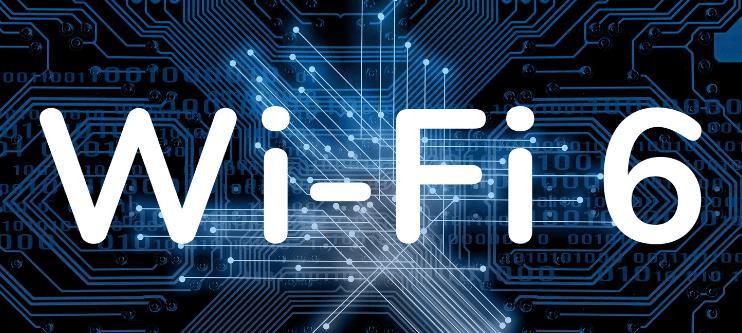Wi-Fi 6 Market 2023-2030: A Comprehensive Analysis of Growth Prospects and Trends

Expanding Internet User Base Drives Wi-Fi 6 Market Growth
Wi-Fi 6, initially referred to as Wi-Fi 802.11ax, is a novel Wi-Fi standard that is set to revolutionize data speed, performance, and accommodate the burgeoning wireless landscape with numerous connected devices. Wi-Fi Alliance, the governing body for Wi-Fi technology, outlines four key advantages of Wi-Fi 6: enhanced transfer speeds, increased device capacity, improved performance amidst multiple connections, and reduced battery consumption.
Devices adhering to Wi-Fi 6 will experience up to 40% performance boost compared to their Wi-Fi 5 counterparts. The mounting demand for performance enhancement is propelling the growth of the global Wi-Fi 6 market.
Access Full Report: https://www.fairfieldmarketresearch.com/report/wi-fi-6-market


Wi-Fi Certified 6 Enhances User Experience
Devices certified under the Wi-Fi Certified 6 program offer an optimized wireless experience. Unlike Wi-Fi 5's 256-QAM mode, Wi-Fi 6 upgrades to 1024-QAM, delivering higher throughput for data-hungry devices. Coupled with 160MHz channels, MU-MIMO, and transmit beamforming, users can expect exceptional performance even in bandwidthcongested scenarios. Certification also necessitates the inclusion of Orthogonal Frequency Division Multiple Access (OFDMA) for efficient channel sharing, augmenting overall data performance. While 5G caters to cellular devices, Wi-Fi 6 is geared towards wireless LAN technology, predominantly driving the Wi-Fi 6 market through home and office networks.
Telecom Service Providers' Investments Propel Wi-Fi 6 Market
The surge in Wi-Fi 6 demand parallels the exponential growth in Internet users, attributed to increased smartphone adoption and enhanced connectivity. This trend is projected to persist, aligning with growing Wi-Fi 6 adoption. Telecommunication companies are strategically investing in advanced Wi-Fi solutions to leverage economic prospects stemming from robust global Internet connectivity. These investments address bandwidth, security, and network stability, positioning telecom providers to capitalize on these opportunities and uphold competitive standards.
Technological Advancements Foster Wi-Fi 6 Market Expansion
The Wi-Fi 6 market is predominantly dominated by indoor applications, with consistent growth. Technological advances have propelled the widespread adoption of wireless LANs (Local Area Networks), rendering wired connections redundant. Additionally, Wi-Fi's use for real-time location systems (RTLS) has gained prominence, circumventing the limitations of GPS in indoor environments. With up to 150 meters operational range, Wi-Fi positioning solutions prove to be versatile, requiring no additional hardware investments. The inherent infrastructure in homes and offices further drives Wi-Fi 6 adoption, facilitating substantial market growth.
Asia Pacific: Epicenter of Wi-Fi 6 Growth
The Asia Pacific region currently stands as a key adopter of Wi-Fi 6 and is poised for substantial expansion throughout the forecast period. China's well-established Wi-Fi 6 ecosystem is anticipated to grow further, potentially evolving into a primary wireless broadband option. This region boasts extensive Wi-Fi 6 networks, supported by China's robust consumer electronics industry. Government initiatives across various Asian countries, such as Japan's focus on smart cities and India's nationwide public Wi-Fi rollout, contribute significantly to Wi-Fi 6 proliferation.
Governments' Role in
Wi-Fi
6 Market Build-up
Asian governments play a pivotal role in driving Wi-Fi 6 market expansion. China is projected to construct over 600,000 Wi-Fi 6 base stations, fostering rapid adoption. Japan's support for smart city development and South Korea's free national wireless Internet network for public buses are examples of government initiatives accelerating Wi-Fi 6 adoption. These efforts enhance connectivity and lay the foundation for sustained Wi-Fi 6 market growth.
Competitive Landscape of Global Wi-Fi 6 Market
Key players in the global Wi-Fi 6 market include Aruba Networks, Juniper Networks, Cisco Systems, NETGEAR, Intel Corporation, Huawei Technologies, Broadcom, Qualcomm Inc., NXP Semiconductors, Extreme Networks, Ubiquiti Networks, Fortinet Inc., AT&T, Cambium Networks, Alcatel-Lucent, D-Link Corporation, TP-Link, MediaTek, and Federated Wireless. Ongoing innovation, advanced product offerings, and strategic partnerships characterize the competitive landscape, driving continuous development within the Wi-Fi 6 market.
Email: sales@fairfieldmarketresearch.com


